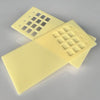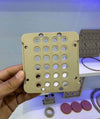Bakelite is one of the most important plastics in history, as it was the first fully synthetic plastic ever created. Invented by Leo Baekeland in 1907, Bakelite revolutionized product manufacturing across countless industries including electronics, appliances, automobiles, and more.
While Bakelite is not as widely used today as modern plastics, it still maintains importance due to its inherent properties and iconic retro look. One popular form of Bakelite is Bakelite sheet, which offers the same properties as molded Bakelite in a flat, plate form.
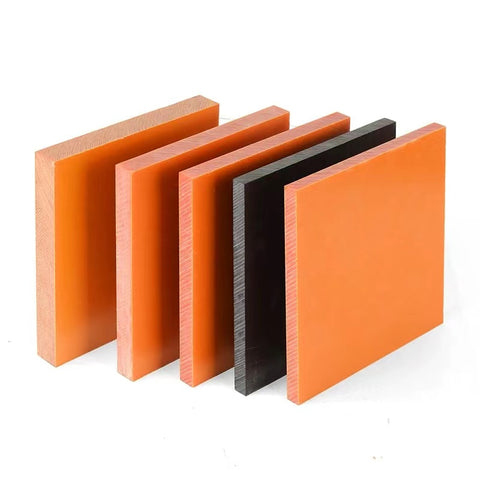
In this complete guide, we will cover everything you need to know about Bakelite sheets including:
A Brief History of Bakelite
What Are the Properties and Characteristics of Bakelite Sheets?
Major Applications and Uses of Bakelite Sheets
Pros and Cons of Bakelite Sheet Material
Where to Buy Bakelite Sheets Online
Let's start by understanding exactly what Bakelite is and how it came into existence.
A Brief History of Bakelite - The World's First Synthetic Plastic
Bakelite was invented in 1907 by Belgian-American chemist Dr. Leo Baekeland. At the time, the most commonly used plastic was celluloid, which was highly flammable and unstable.
Dr. Baekeland set out to find a viable plastic alternative that retained the beneficial properties of shellac (an all-natural resin) but without the drawbacks. After years of experiments, he discovered that a combination of phenol and formaldehyde, when mixed together under high heat and pressure, formed a resinous material that could be molded while hot and retained its shape when cool.
The end result was a hard, durable, heat-resistant plastic that Dr. Baekeland named “Bakelite” in honor of himself. Bakelite was distinguished as the first truly synthetic plastic polymer, made entirely from artificial components.
This invention revolutionized the plastics industry and opened the door to the full-scale manufacturing of synthetic polymeric materials. Bakelite was soon mass-produced and used across countless applications including electrical insulators, radios, telephones, clocks, kitchenware, jewelry, children’s toys, and more.
Bakelite gained immense commercial success during the 1920s-1930s. It was known as one of the earliest “wonder materials” and was prized for its heat resistance, mechanical strength, and versatile molding properties. The iconic look of vintage Bakelite products led to its popularity in jewelry and collectibles.
Although Bakelite was eventually surpassed by new plasters like polystyrene and PVC in the 1950s-60s, it still retains an important place in the history of plastics development. Vintage Bakelite products are still cherished today by collectors and decor enthusiasts.
Now that we’ve covered the background of Bakelite, let’s look closer at the properties and characteristics of Bakelite sheets specifically.

What Are the Properties and Characteristics of Bakelite Sheets?
Bakelite sheets are flat plastic plates made from layers of paper, fabric, or other materials that have been impregnated with liquid Bakelite resin and then cured under high heat and pressure.
The resin permeates the layers and binds everything together into a hard, stiff sheet form. Bakelite sheets demonstrate the same iconic properties as molded Bakelite but in a flat panel form. Some key characteristics include:
- High Mechanical Strength: Bakelite sheets have very good tensile and compressive strength due to the thermosetting nature of the resin. They are rigid and hold form under load.
- Heat and Flame Resistance: One of Bakelite’s most desirable traits is its high heat resistance of up to 250°C before softening. It also has low flammability and will self-extinguish when removed from a flame.
- Electrical Insulation: Bakelite is an exceptionally good electrical insulator and was vital for early 20th century electrical devices. The sheets provide complete dielectric insulation.
- Chemical Resistance: Bakelite offers good resistance to acids, alkalis, solvents and other chemicals. It has low water absorption as well.
- Dimensional Stability: Fully cured Bakelite maintains its shape over time and has low creep. The sheets provide stable long-term dimensions.
- Machinability: Bakelite can be readily machined, cut, drilled, stamped, polished, engraved and more with standard metalworking tools.
- Colorability: Bakelite resin can be produced in various colors by adding mineral or wood filler pigments. Patterned sheets are also possible.
These well-balanced physical and electrical properties make Bakelite a very versatile and useful plastic sheet material for all sorts of demanding applications. It offers a unique set of strengths compared to natural materials like wood, rubber and metal alloys.
Next we’ll look at some of the major uses of Bakelite sheets across different industries.
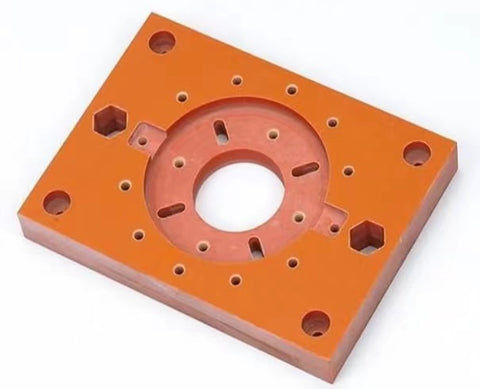
Major Applications and Uses of Bakelite Sheets
Thanks to its desirable properties, Bakelite sheet has been used across a wide range of applications since its invention over 100 years ago. Some of the primary uses include:
- Electrical Insulation: Bakelite sheets are commonly used for insulators, bushings, washers, spacers and other electrical components because of their high dielectric strength and heat resistance. They prevent current leakage and electrical fires.
- Mechanical Parts: Gears, bearings, brake pads, bushings, washers and other mechanical parts depend on Bakelite’s friction and wear resistance, rigidity, and machinability. Bakelite’s low creep retains precision tolerances.
- Automotive Parts: Distributor caps, insulation pads, and various trim and mechanical components in vintage cars relied on Bakelite’s versatility. Modern auto racing cars still use it for brake pads.
- Furniture: Bakelite sheets have been used for tabletops, cabinet doors, accents, and other furnishings that benefit from the look and durability of Bakelite. It machines like wood but resists heat and scratches.
- Architectural Design: Bakelite sheets have been made into counter tops, wall tiles, partitions, signs, decorative accents, and other building elements where a sleek, durable plastic material is desired.
- Appliances: Bakelite’s heat and electrical insulation properties were invaluable for early irons, toasters, kitchenware, and other home appliances where safety was critical. Many of these products are now collectibles.
- Jewelry: Bakelite’s retro aesthetic made it popular for jewelry, rings, bracelets, earrings and decorative objects. It can be intricately carved and polished.
Bakelite sheet continues to be valued today for both its functionality as well as iconic vintage style. It occupies an important niche compared to other common plastics.
Now let’s weigh the key pros and cons of Bakelite as a material choice.
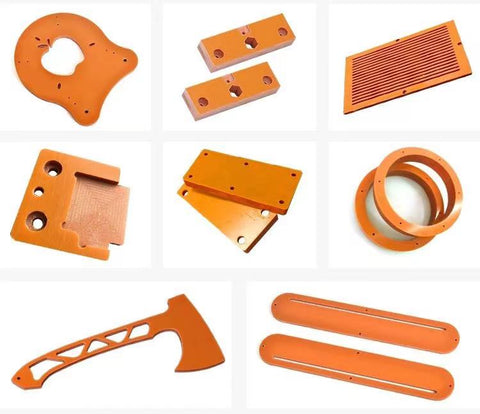
Pros and Cons of Bakelite Sheet Material
Bakelite offers some unique advantages but also has some downsides to consider depending on the application:
Pros:
- Withstands very high temperatures up to 250°C.
- Does not melt or burn easily like thermoplastics.
- Excellent electrical insulator.
- Resists many chemicals, oils, solvents.
- High mechanical strength and hardness.
- Maintains precision dimensions.
- Can be readily machined and fabricated.
- Vintage aesthetic appeal.
Cons:
- Not as impact resistant as other modern plastics. Prone to shattering.
- Brittle over time, susceptible to cracks from stresses.
- Can be damaged by certain chemicals like nitric acid.
- Prone to discoloring from UV exposure over time.
- Limited number of available colors compared to modern plastics.
- No longer produced in large quantities, may be hard to source.
Overall, Bakelite sheets offer very good performance across a range of mechanical, thermal, and electrical properties that make them suitable for niche applications. However, their brittleness and limited chemical resistance prevent them from being used as a general-purpose plastic for most consumer products today.
They work best for small-scale industrial applications where heat or electrical insulation is critical. For vintage decorative items, the retro styling of Bakelite is a major bonus.
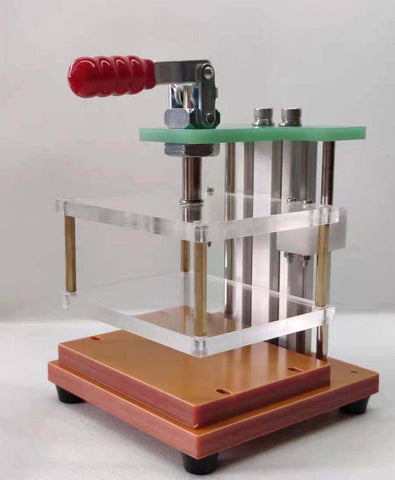
Now that we’ve covered the key benefits and tradeoffs of Bakelite sheets, let’s look at where you can buy them online.
Where to Buy Bakelite Sheets Online
Since Bakelite is no longer a mass-production plastic, sourcing sheets and raw materials can be a challenge compared to other plastics. Here are some of the top places to find Bakelite sheets available for purchase online:
BeePlastic.com
- Specializes in plastic sheet materials including a selection of Bakelite sheet sizes and colors.
- Ships worldwide from their warehouse in Europe. Offers custom cutting services.
- Bakelite sheets available in sizes up to 1000 x 500 mm and thicknesses from 1 to 20 mm.
- Orange, black, brown, and marbled multicolor options available.
Amazon
- Marketplace sellers offer a limited selection of small Bakelite sheet sizes and thicknesses.
- Primarily vintage sheets repurposed from old industrial stock. Few color choices.
- Order minimums may apply. Check shipping times from individual sellers.
eBay
- Features vintage Bakelite industrial off-cuts and scraps listed by various sellers.
- Sheet sizes tend to be irregular or smaller cut pieces rather than full sheets.
- Provides an opportunity to repurpose authentic retro Bakelite at lower costs.
Etsy
- Specialty online marketplace with some handmade jewelry and craft items incorporating Bakelite sheets.
- Not a consistent source for buying raw sheets, but some sellers may offer materials.
- Try searching for “Bakelite sheet” or “Bakelite resin” on Etsy to find limited offerings.
The best place to buy Bakelite sheets online is BeePlastic.com due to their dedicated selection of Bakelite products.
Conclusion
Bakelite sheet offers a versatile, heat-resistant plastic option thanks to the unique properties of this retro synthetic material invented by Dr. Leo Baekeland over 100 years ago. It continues to fill important niche applications today.
Bakelite sheets can provide electrical insulation, mechanical strength, machinability, chemical and heat resistance well beyond natural materials like wood and rubber. The vintage styling also makes Bakelite popular for jewelry and decorative objects.
However, downsides like brittleness and limited chemical resistance prevent it from being a mainstream plastic for mass consumer products today. It works best for specialty electrical and industrial applications where heat resistance and dimensional stability are critical.
To get your hands on this iconic plastic, BeePlastic.com offers the widest selection of Bakelite sheets available online with worldwide shipping options. For smaller quantities or repurposed vintage Bakelite.
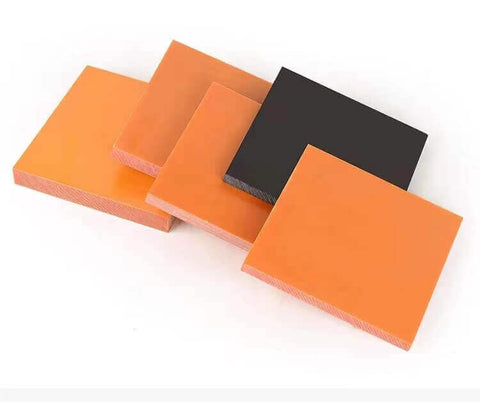
Visit BeePlastic.com today to order your Bakelite sheets and experience this revolutionary early plastic material.
🎉🎉🎉Limited Time Offer Use code: QR4GNY08SHVR at checkout and enjoy a special discount on your entire order! 👉 Bakelite plastic

